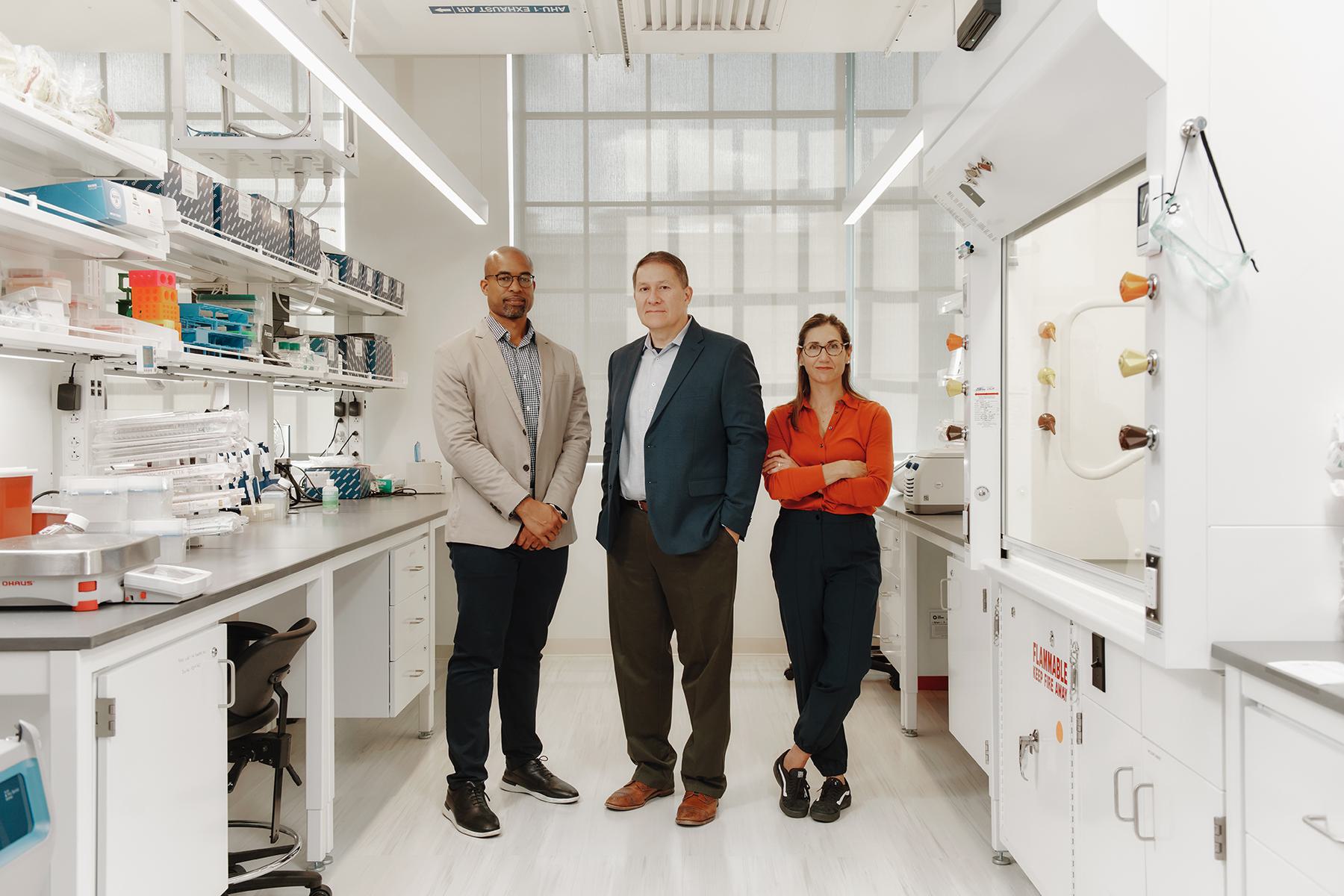Cellular engineering, at unparalleled speeds, from discovery to the clinic.
Joining MIT as a faculty member in 2010 should have been a joyful time in Associate Professor Cullen Buie’s life but he was devastated by the loss of his sister in June that year. She passed away suddenly from sepsis caused by a bacterial infection. After his loss, he became fascinated with bacteria and began pursuing research in biotechnology. Cullen’s journey was aided by successfully obtained grants from DARPA and the NSF. Recognizing his next focus, a mentor at Virginia Tech recommended Paulo Garcia as a postdoc due to his pioneering work on using electric fields to treat spontaneous brain tumors. Dr. Garcia is a Research Scientist and past Translational Fellow at MIT. The two share an endless fascination with developing game-changing tools with high societal impact. They are taking on the challenging task of innovating the process for genetic engineering using electric fields.
One of the main bottlenecks during genetic engineering is the actual delivery of the DNA into the cell. As it stands, a highly trained person inserts DNA into cells one sample at a time, which is a manual and labor intensive process. Kytopen has invented a continuous flow process for delivery using electricity in microfluidic devices to zap bacterial cells as they’re flowing inside microscale channels. This is the new wave of genetic engineering, delivering DNA to bacterial cells up to 10,000 times faster than current state-of-the-art methods. “Initially we believed that the industry would be interested in engineering new types of microorganisms, but through market interviews we learned that they are far more interested in speeding up the whole process,” Cullen says. “Everyone wants to make it faster. Over the past 18 months, we discovered there’s a huge market for speed. We developed a technology to address this issue and we’re now looking to commercialize it.”
The developments driving this explosion in biotechnology is ability to read and write DNA at a much lower cost than 15 years ago. Fifteen years ago, sequencing a whole human genome cost $100M. Today it can be done for about $1,000. Because these costs are reduced, opportunity abounds. In spite of this, it’s not feasible to look at a desired product and then design DNA without trial and error. Significant iterations and variations are required to arrive at the answer. Millions or billions of cellular variants are needed to figure out which one has the right characteristics. Kytopen is enabling the next wave of genetic engineering through their process innovation.
The plethora of applications enabled by low-cost DNA synthesis and sequencing, engineering, and analysis have allowed scientists to make jet fuel, cure chronic diseases, and develop synthetic leather. Imagine what’s next. “The bacteria are amazing, marvelous little creatures,” Cullen says affectionately. “What’s fascinating to me is how much potential there is. To the extent that we can unlock that diversity with our creative engineering, this is a tremendous opportunity.” When Cullen describes their entire journey as market-driven, Paulo agrees. “We’re operating in an industry that has huge potential and you see it everywhere,” says Paulo.
“With Kytopen, we can create high value chemicals and biomaterials that are produced in a manner that ultimately reduces the damage to the planet,” Paulo says. With such a huge canvas of potential, the team plans to get laser focused. “Investment is important,” Paulo says of joining The Engine. However, “most of our decision was based on the potential to really push our dream and hit the ball out of the park in collaboration with The Engine.” Cullen nods. “This is entrepreneurship within entrepreneurship and it’s very exciting.”

